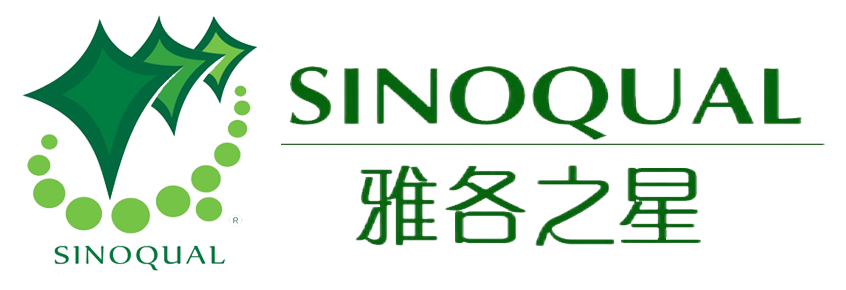The global beauty industry is undergoing a transformation as consumers increasingly demand products that demonstrate transparency, ethical sourcing, and ingredient purity...
Codex Alimentarius Commission (CAC): General Guidelines for the Use of "HALAL"
2025-05-15
The Codex Alimentarius Commission (CAC) is an intergovernmental organization jointly established in 1963 by the Food and Agriculture Organization of the United Nations (FAO) and the World Health Organization (WHO). Its mission is to coordinate intergovernmental food standards and establish a comprehensive international food standards system. The Codex Alimentarius Commission currently has 180 member countries, representing 98% of the world's population. The CAC has published general guidelines on the use of "HALAL," the only guidelines on "HALAL" issued by an international food standards organization to date. The guidelines contain the following details:
The Codex Alimentarius Commission (CAC) recognizes that minor differences of opinion may exist among different Muslim sects regarding the interpretation of permitted and prohibited animals, as well as slaughter standards. Therefore, these general guidelines are subject to interpretation by relevant importing organizations. However, halal certificates issued by organizations in exporting countries should generally be accepted by importing countries, unless the latter provide justification for other specific requirements.
1.scope
1.1These guidelines recommend measures to be used in food labelingHALAL(or”Muslim”)food.
1.2This guideline applies to the provisions of the General Standard for the Labelling of Prepackaged FoodsHALAL(or”Muslim”)and equivalent terms, including their use in trademarks, brand names and trade names.
1.3These guidelines are intended to supplement the general guidance of the Codex Alimentarius Commission on declarations and do not replace any prohibitions contained therein.
2. Definition
2.1HALAL(or”Muslim”)Food refers to food permitted by Halal law and should meet the following conditions:
2.1.1Does not contain or include anything that is considered prohibited under Halal law;
2.1.2Has not been prepared, processed, transported or stored using any utensils or facilities that are not prohibited according to Halal law;
2.1.3During preparation, processing, transportation or storage, no2.1.1and2.1.2direct contact with food.
2.2Despite the above2.1Festival:
2.2.1HALAL(or”Muslim”)Food can be produced inHALAL(or”Non-halal”)Food is prepared, processed or stored in different parts or production lines within the same premises, but necessary measures must be taken to preventHALAL(or”Muslim”)Food and NonHALAL(or”Non-halal”)Any contact between food;
2.2.2HALAL(or”Muslim”)Food can be used before it is used for nonHALAL(or”Non-halal”)Facilities where food is prepared, processed, transported or stored, provided that appropriate cleaning procedures are followed as required by Halal law.
3.use"HALAL"The standard of deadline
3.1Eligible food
HALAL(or”Muslim”)The term can be used for foods that are considered legal. According to Halal law, all sources of food are lawful except the following sources, including their products and derivatives which are considered haram:
3.1.1Foods of animal origin
(a) Pigs and boars.
(b) dogs, snakes and monkeys.
(c) carnivores with claws and fangs, such as lions, tigers, bears, and other similar animals.
(d) Birds of prey with talons such as eagles, vultures, and other similar birds.
(and) Pests such as rats, centipedes, scorpions and other similar animals.
(f) Animals that are prohibited to be killed in Islam, namely ants, bees and woodpeckers.
(g) are animals that are considered to repel, usually like lice, flies, maggots and other similar animals.
(h) Animals that live on land and in water, such as frogs, crocodiles, and other similar animals.
(i) mules and domestic donkeys.
(j) All poisonous and harmful aquatic animals.
(k) Any other animal that is not slaughtered according to Halal principles.
(l) blood.
3.1.2Plant-based foods
Toxic and dangerous plants, unless the toxin or hazard is eliminated during processing.
3.1.3drinks
(a) alcoholic beverages.
(b) All forms of intoxicating and dangerous drinking.
3.1.4food additives
All from3.1.1,3.1.2and3.1.3All food additives listed in the table.
3.2plunder
All permitted land animals should be slaughtered in accordance with the Codex Code of Hygienic Practice for Fresh Meat and the following requirements:
3.2.1The person should be a Muslim of sound mind and knowledgeable about the Halal slaughtering procedures.
3.2.2According to Islamic law, the animals being slaughtered should be permissible.
3.2.3At the time of slaughter, the animal to be slaughtered shall be alive or deemed to be alive.
3.2.4TheBismillah"This phrase.
3.2.5Slaughtering equipment should be sharp and should not be lifted from the animal during slaughter.
3.2.6Slaughter should be performed by cutting the trachea, esophagus and major arteries and veins at the neck.
3.3Preparation, processing, packaging, transportation and storage
All food preparation, processing, packaging, transportation and storage should comply with the above2.1and2.1and the Codex General Principles of Food Hygiene and other relevant Codex standards.
4.Additional labeling requirements
4.1When a food is claimed to beHALAL(or”Muslim”)When eating,HALAL(or”Muslim”)or equivalent term should appear on the label.
4.2According to the Codex Alimentarius Commission's general guidelines on claims,HALAL(or”Muslim”)The statement should not be used in a way that might result in
